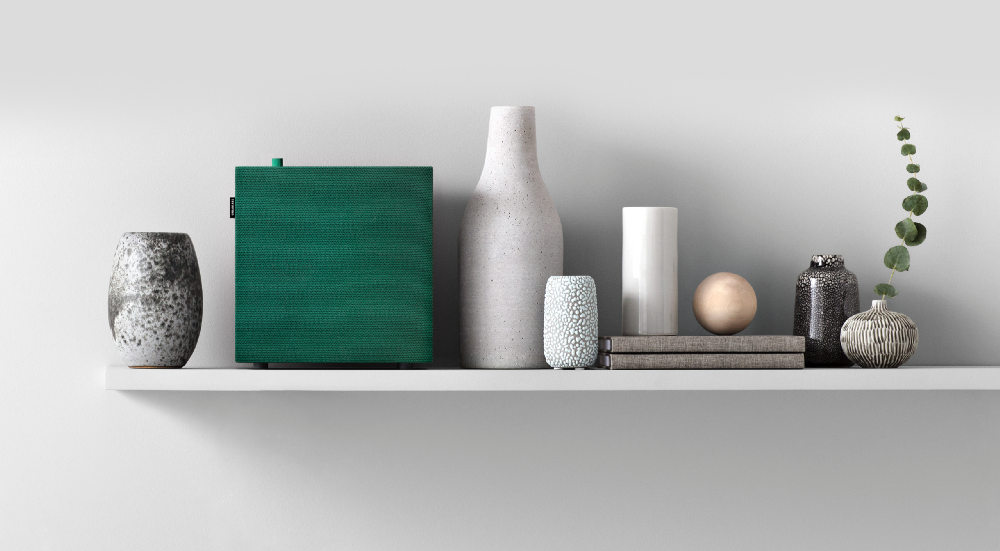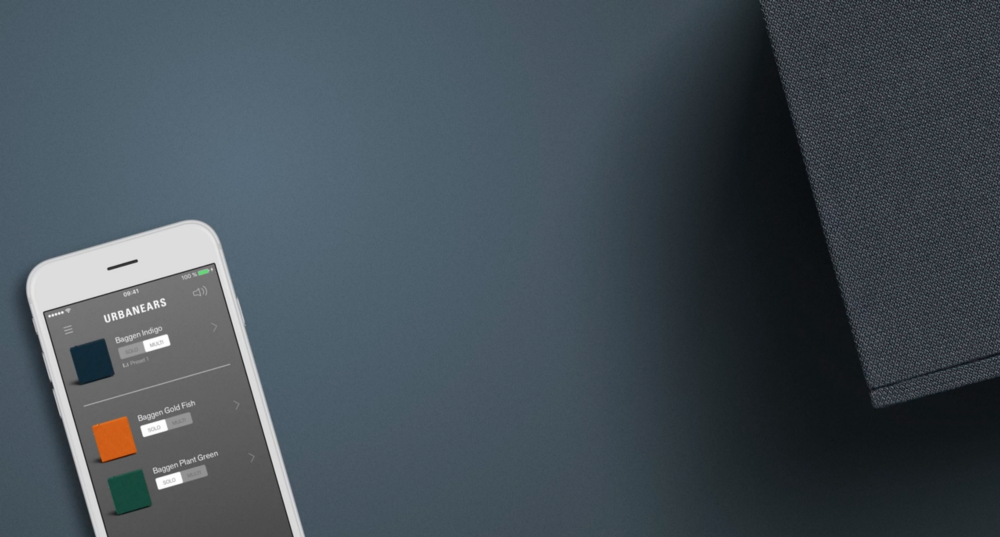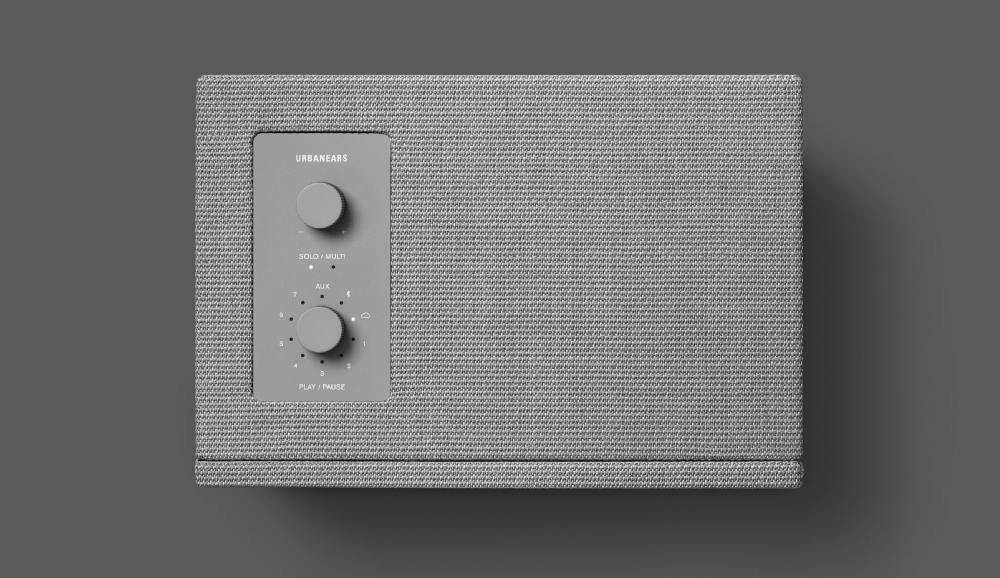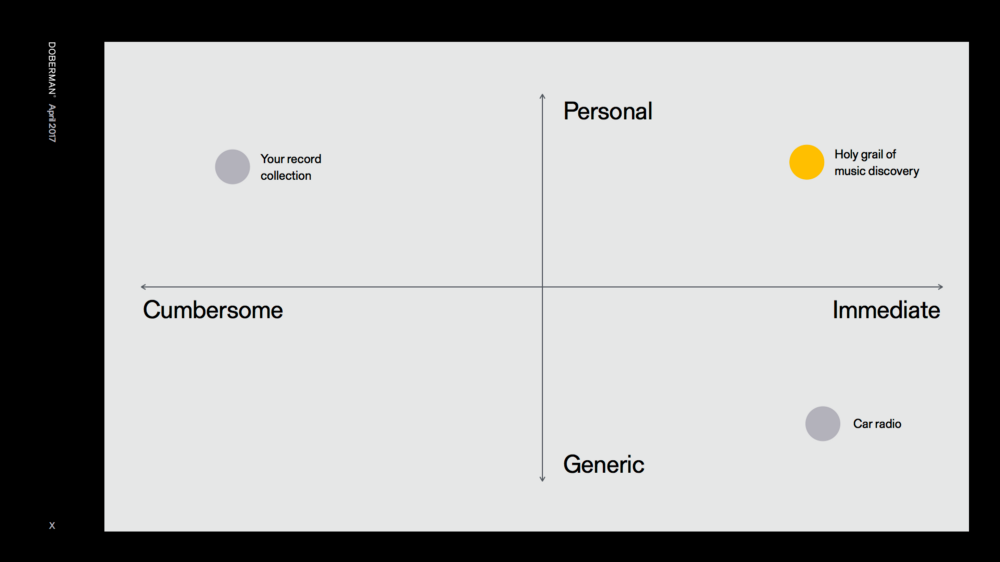Music has the ability to affect us in ways other mediums cannot. When Urbanears set out to change the way we listen, they wanted to start at the beginning. Here’s what we learned helping them along the way — from physical and digital.
Learning where to focus “A speaker is simply a vehicle to let the music carry us away. Our main objective should be getting people to that experience as soon as possible.”
Starting with the basics, we wanted to map the full experience from start to finish — from buying a speaker and setting it up, to listening to music. Using experience prototyping, we acted out the scenario and observed people’s expressions.
The key touch points and the feelings they provoke:
- Buying & unboxing — excitement 😃
- Setting up the speaker — total frustration 😡
- First-time use — excitement (finally)😃
- Continued listening experience — room for improvement 😑
- Setting up multi-room? People love the idea but have a hard time setting it up. 😒
 The Urbanears speaker in its natural habitat
The Urbanears speaker in its natural habitat
People are impatient to get setup quickly, and they want to play music using their own apps. People also found the multi-room concept confusing. When choosing where to put our design efforts, we like to improve the biggest frustrations and work really hard to make those moments joyful. With that mantra we formulated the following design challenges:
- What is the most satisfying way to setup your speaker?
- Personalize the preset knob?
- Can we make the multi-room concept easier to understand?
Checklist: Learning where to focus
- Create an initial understanding of the challenge with rough experience prototyping
- Identify the parts that suck the most, and focus on those
The most satisfying way to setup your speaker Creating a feeling of success and reward during the setup was more important than making it the quickest process.
Without going into technical detail, setting up a wifi speaker requires the user to go through certain steps. They all take time and it’s a little more tedious than you’d like it to be. Our hypothesis was that creating the feeling of success and rewards during the setup process would make a huge difference.
As we began the project there was no way for the app to identify a specific type of speaker. It required little prototyping to understand that the experience would be greatly improved by showing the correct product model and color, for example when finding your speaker on the wireless network. To fix this, the speaker firmware had to be customized and IDs were added to identify model and color.
 Speaker color and model showing up in the app
Speaker color and model showing up in the app
During the setup phase, using the standard ways of success messages and moving progress bars wasn’t exciting enough. After some testing, we understood that we could use sound feedback from the speaker. This helped people to create a feeling of attachment to the speaker itself, making for a more playful, almost communicative experience. For example, selecting your speaker for setup, it would greet you with a ‘hello’ kind of sound.
Taking that concept further, we wanted to try and give the speaker a personality. Setting up a name for the speaker helped people connect more with their newly bought product, and created a leniency towards the setup process — people had an easier time to accept that ‘Henrietta’ might take a while to install (compared to “UBspeaker XYZ”).
The final way we found to improve this lengthy process was to run re-boots and other time-consuming processes in the background. Whilst waiting we entertain the user with things like a product video, or taking the next step.
Checklist: Set up
- Show the correct color of the hardware you’re setting up
- Give it a name
- Run tedious processes in the background
Personalized presets The less time spent on setting up and the more accurate the sounds are to a person’s musical taste, the better.
 The preset knob allows people to play their favorite music without using their phone.
The preset knob allows people to play their favorite music without using their phone.
Now that the fundamentals were in place, it was time to improve on what makes the Urbanears speaker unique. During our initial testing, as well as earlier experiences with music discovery, we had found a clear pattern: the less time spent on setting up and the more accurate the sounds are to a person’s musical taste, the better. People want their listening to be immediate and personal. In a matrix it would look something like this:
 A matrix mapping user needs for music discovery. Most people want their experience at the top right.
A matrix mapping user needs for music discovery. Most people want their experience at the top right.
The Urbanears speakers come with a unique feature that carries much of the same thinking. Using presets people can play their favorite sounds without the need of their phones.
The initial idea of the preset knob was to populate it with radio stations, so that it could be played out of the box. That still works. But we also wanted to try and take it further — getting more personal.
Imagine coming home, turning the knob on your speaker, and instead of hearing a radio station catering to your general taste, you turn the knob to hear what an app thinks you want to hear — with all the data they have on your listening you’re much more likely to hear something that excites you.
We believe this is indeed the future for music streaming services — knowing what people want to hear, and letting that experience be part of their everyday lives.
Checklist: Personalization
- Connect services that benefit the user
- Make it easy for the end user to connect to them
- Don’t make it a must
Making multi-room understandable Wireless speaker systems on the market are pushing a concept called ‘multi-room’. It’s something like “a way to put speakers into many subgroups, that can play one stream each”. Few people understand this concept, and even fewer understands how to set it up (we challenge you to try).
Needless to say, making true multi-room easy to use is a hard task, both technically and as a user experience. Technically the feature was already built, but because it didn’t pass our user tests, we decided to scrap it and replace it with a ‘Single/Multi’ function. This way, a speaker would either play on its own or with all the rest.
The Single/Multi setup supports all the use-cases multi-room does for a person owning up to 3 speakers, and when they connect 5 or more (an unlikely scenario), we could potentially unlock the more comprehensive features in the app. Single/Multi performed a lot better in user tests and we’re incredibly happy that Urbanears decided to go in this direction.
Checklist: Making tricky things easier
- Find out what causes confusion, and remove it
- Unlock more functionality only if the system requires it
The result So, how well did we manage in the end? Leaving the secret labs and testing environment, making the leap into the real world is always a challenge.
We’re super happy so many big details made it into the final product. The verdict is with the consumers now, and we’re looking forward to learning much more as reviews are coming in. Interested in the speaker? Check them out.
– Nils Westerlund, Design Director at Doberman